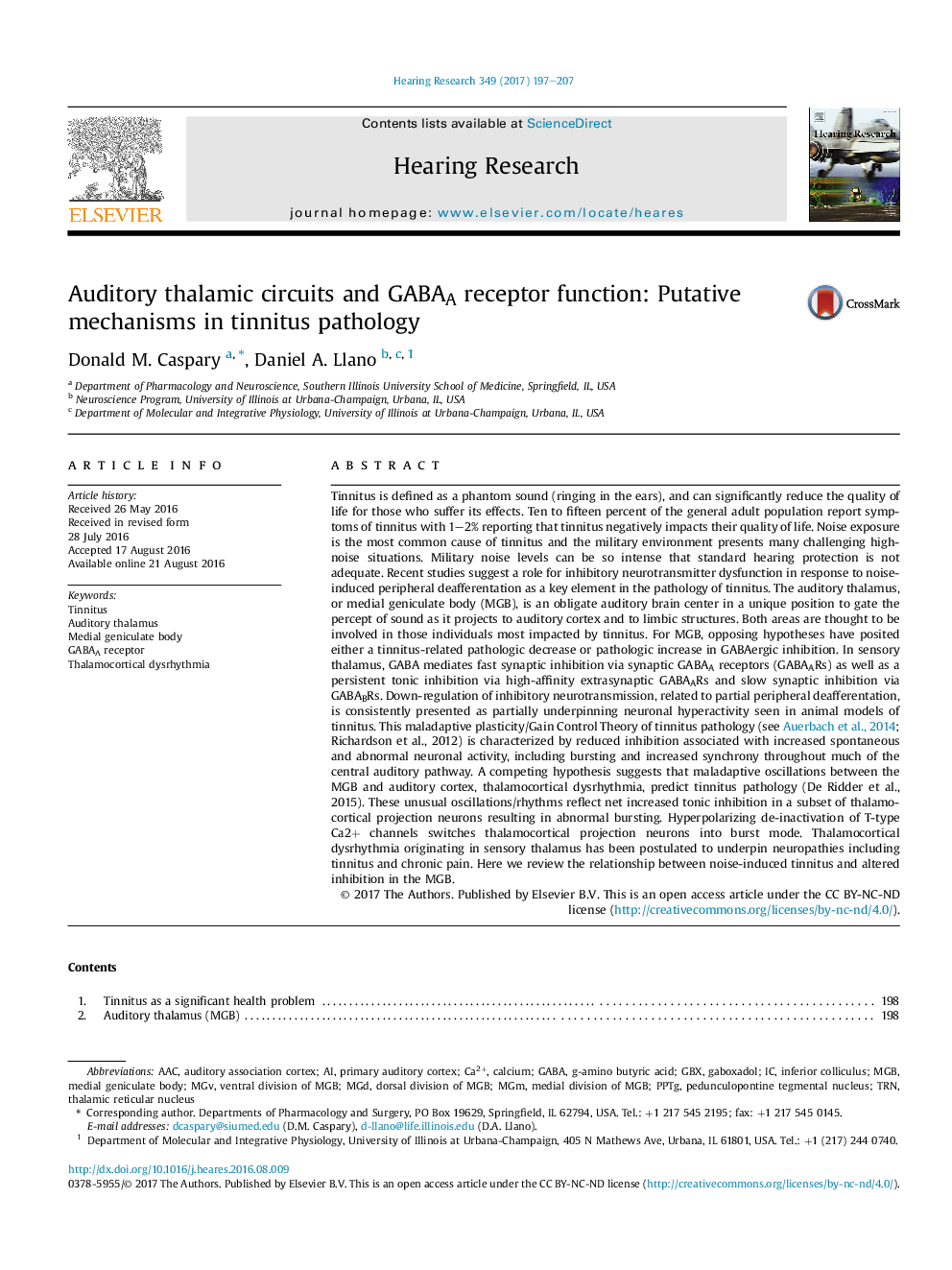| کد مقاله | کد نشریه | سال انتشار | مقاله انگلیسی | نسخه تمام متن |
|---|---|---|---|---|
| 5739457 | 1615551 | 2017 | 11 صفحه PDF | دانلود رایگان |

- Auditory thalamus/Medial Geniculate Body is a key component of the tinnitus circuit.
- Extrasynaptic GABAA receptors can switch thalamocortical neurons to burst mode.
- Maladaptive increases in MGB inhibition may underpin abnormal bursting.
- Abnormal bursting may result in oscillations called thalamocortical dysrhythmia.
- Thalamocortical dysrhythmia may reflect a response to increased excitation from IC.
Tinnitus is defined as a phantom sound (ringing in the ears), and can significantly reduce the quality of life for those who suffer its effects. Ten to fifteen percent of the general adult population report symptoms of tinnitus with 1-2% reporting that tinnitus negatively impacts their quality of life. Noise exposure is the most common cause of tinnitus and the military environment presents many challenging high-noise situations. Military noise levels can be so intense that standard hearing protection is not adequate. Recent studies suggest a role for inhibitory neurotransmitter dysfunction in response to noise-induced peripheral deafferentation as a key element in the pathology of tinnitus. The auditory thalamus, or medial geniculate body (MGB), is an obligate auditory brain center in a unique position to gate the percept of sound as it projects to auditory cortex and to limbic structures. Both areas are thought to be involved in those individuals most impacted by tinnitus. For MGB, opposing hypotheses have posited either a tinnitus-related pathologic decrease or pathologic increase in GABAergic inhibition. In sensory thalamus, GABA mediates fast synaptic inhibition via synaptic GABAA receptors (GABAARs) as well as a persistent tonic inhibition via high-affinity extrasynaptic GABAARs and slow synaptic inhibition via GABABRs. Down-regulation of inhibitory neurotransmission, related to partial peripheral deafferentation, is consistently presented as partially underpinning neuronal hyperactivity seen in animal models of tinnitus. This maladaptive plasticity/Gain Control Theory of tinnitus pathology (see Auerbach et al., 2014; Richardson et al., 2012) is characterized by reduced inhibition associated with increased spontaneous and abnormal neuronal activity, including bursting and increased synchrony throughout much of the central auditory pathway. A competing hypothesis suggests that maladaptive oscillations between the MGB and auditory cortex, thalamocortical dysrhythmia, predict tinnitus pathology (De Ridder et al., 2015). These unusual oscillations/rhythms reflect net increased tonic inhibition in a subset of thalamocortical projection neurons resulting in abnormal bursting. Hyperpolarizing de-inactivation of T-type Ca2+ channels switches thalamocortical projection neurons into burst mode. Thalamocortical dysrhythmia originating in sensory thalamus has been postulated to underpin neuropathies including tinnitus and chronic pain. Here we review the relationship between noise-induced tinnitus and altered inhibition in the MGB.
Journal: Hearing Research - Volume 349, June 2017, Pages 197-207